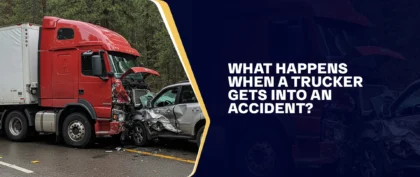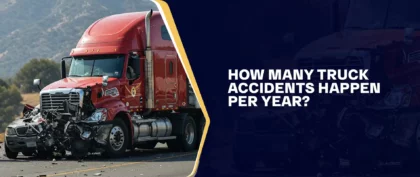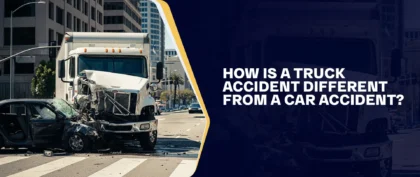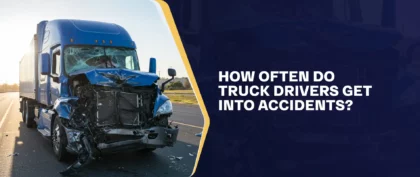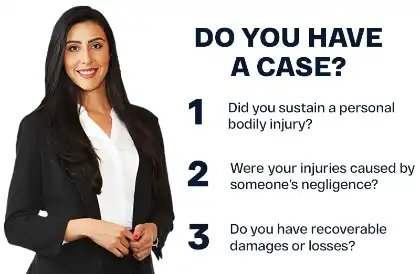Table of Contents
Accidents involving powered industrial trucks, commonly known as forklifts, may vary due to several factors, including the industry type, the extent of employee training and safety procedures, and the particular work environment. Forklifts are frequently used in workplace settings like warehouses, manufacturing facilities, and construction sites, which are inherently susceptible to accidents.
According to data from the U.S. Occupational Safety and Health Administration (OSHA), forklifts alone cause around 85 fatal accidents and 34,900 serious injuries annually in the United States. Nevertheless, these figures can vary annually and are susceptible to alteration in response to improving safety regulations and industry standards.
Proper training, equipment maintenance, and strict adherence to safety guidelines can help decrease the frequency of such accidents. Employers need to prioritize safety and provide training to operators and workers to minimize the risk of accidents involving powered industrial trucks.
What Is A Forklift Mainly Used For?
Forklifts are primarily used for material handling and transportation within various industries. Their versatility makes them indispensable in warehouses, manufacturing facilities, construction sites, and distribution centers. Forklifts are designed to lift, move, and stack pallets, crates, and heavy materials, streamlining the loading and unloading of goods and optimizing warehouse storage.
They are also essential for other tasks like order picking, inventory management, and facilitating the efficient flow of goods in logistics operations. In construction, forklifts assist in moving materials and equipment, while in manufacturing, they play a crucial role in the assembly process. Overall, forklifts are workhorses in material handling, contributing to increased productivity and operational efficiency in diverse industrial settings.
Forklift Types And Their Uses
There are multiple types of forklifts, each designed for specific purposes and environments. Some common types include:
- Counterbalance Forklifts — These are the most common type, with a weight at the rear to balance the load in the front. They are versatile and can be used in various settings.
- Reach Forklifts — Designed for narrow aisle use, these forklifts have extended forward reach to pick up and place loads on high shelves.
- Pallet Jacks — Commonly referred to as pallet trucks, these are used for moving palletized loads horizontally. They come in manual and electric variants.
- Order Pickers — These forklifts, used in warehouses for order fulfillment, allow operators to pick individual items from high shelves.
- Rough Terrain Forklifts — These forklifts, which have large, rugged tires, are built for outdoor use on uneven surfaces and are often used in construction and agriculture.
- Telescopic Handlers — These are similar to rough terrain forklifts but have a telescoping boom that can extend upward and outward, making them useful for versatile lifting and loading.
- Side Loaders — These forklifts have forks mounted on the side and are ideal for handling long, heavy loads like timber or steel.
- Articulated Forklifts — Designed for tight spaces, these forklifts have a jointed frame that allows for greater maneuverability.
- Industrial Forklifts — Used for heavy-duty tasks in industrial settings, these forklifts can handle large loads and come in various configurations.
- Warehouse Forklifts — These are optimized for indoor use, particularly in narrow aisles of warehouses. They include reach trucks, order pickers, and stand-up forklifts.
The choice of forklift type depends on the specific tasks and environment in which it will be used. Each type offers unique features to meet various material handling needs.
What Are The Most Common Accidents Involving A Forklift?
Forklifts play a vital role in handling materials across a range of industries. However, their use also carries inherent risks. The most common accidents involving forklifts typically include:
- Tipping Over — Forklifts can tip over if overloaded, operated on uneven surfaces, or driven too fast while turning. This can cause serious injuries or fatalities.
- Striking Objects or Pedestrians — Forklifts can accidentally collide with objects, such as racks, walls, or other vehicles, or strike pedestrians in the work area.
- Falling Loads — Improperly fastened or stacked loads can fall off the forks, potentially injuring workers or damaging goods.
- Falls From Height — Workers may fall from elevated positions if they stand on the forks or the overhead guard of a forklift.
- Entrapment — Operators or workers on foot can become trapped between the forklift and another object or vehicle, resulting in injuries.
These accidents often result from a combination of factors, including operator error, inadequate training, lack of adherence to safety procedures, and poor maintenance of the forklifts. Proper training and safety measures are crucial in reducing the risk of these incidents and work injuries.
What Is The Most Common Cause Of Forklift Accidents?
Forklift accidents can be attributed to a combination of factors, with operator error standing out as a primary cause. Inadequate training, recklessness, distraction, and fatigue on the part of the forklift operator can lead to accidents. Other significant factors include unsafe speed, overloading the forklift, and encountering uneven surfaces or poor visibility, especially when carrying substantial loads. Mechanical failures and lack of maintenance can also contribute to accidents, as can poor housekeeping, which results in cluttered workspaces and obstructions.
Inadequate communication and the absence of robust safety protocols can further compound the risk. To minimize forklift accidents, it’s crucial to address these factors through thorough operator training, regular equipment maintenance, strict adherence to safety procedures, and fostering a safe work environment.
Why Are Forklifts So Dangerous?
Due to the risks associated with forklift operations, it is imperative to understand why these machines can be so dangerous. Forklifts pose significant dangers for several reasons:
- Weight and Mass — Forklifts are heavy machines, often weighing up to 9,000 pounds, which can result in severe damage and injuries in case of accidents.
- Limited Visibility — Operators frequently encounter visibility issues due to the forklift’s structure or the loads they carry, impairing their ability to spot potential hazards.
- Speed and Handling — Forklifts can reach considerable speeds, and maneuverability can be challenging. This combination may lead to accidents if not managed with care.
- Surface Conditions — Forklifts often operate in environments with uneven surfaces, such as warehouses or construction sites. These conditions can compromise stability, increasing the risk of tipping.
- Inadequate Training — Lack of proper training for forklift operators can result in unsafe practices and accidents. Proper training is crucial for maintaining safe operation.
- Heavy Loads — Carrying heavy loads can impact the forklift’s stability and make it more susceptible to tipping over, underscoring the importance of adequately distributed loads.
- Workplace Factors — The workplace environment plays a crucial role. Factors like a congested workspace, inadequate maintenance, and a lack of clear safety protocols can contribute to forklift accidents.
To reduce these risks effectively, thorough training programs, strict maintenance routines, and the implementation of solid safety measures are crucial.
Forklift Accident Statistics
- Industry statistics in the United States cite a 90% probability of a forklift being involved in a serious injury or fatality accident over its useful lifetime.
- OSHA estimates that forklifts account for 61,800 minor injuries, 34,900 serious injuries, and 85 forklift-related deaths every year.
- With almost 900,000 forklifts in operation in the United States, there is a 1 in 10 chance that each forklift working in your facility will be involved in an accident.
- Almost 80% of forklift accidents involve a pedestrian. In the United States, 1 out of every six workplace deaths is forklift-related.
Forklift Accident Costs
The National Safety Council reported that the total cost of work injuries in 2021 was $167.0 billion, including wage and productivity losses of $47.4 billion, medical expenses of $36.6 billion, and administrative expenses of $57.5 billion. This total also includes employers’ uninsured costs of $13.8 billion, including the value of time lost by workers other than those with disabling injuries who are directly or indirectly involved in injuries, and the cost of time required to investigate injuries, write up injury reports, and so forth. The total includes damage to motor vehicles in work-related injuries of $5.4 billion and fire losses of $6.3 billion.
What Can Be Done To Prevent Forklift Accidents?
To avoid forklift accidents, companies must prioritize safety comprehensively. This commences with providing thorough training and certification for forklift operators, maintaining their proficiency in safe operational procedures. Consistent maintenance checks and timely repairs are also crucial in preserving forklifts in peak condition.
Additionally, incorporating safety features, such as alarms, lighting enhancements, and mirrors, can significantly improve visibility. Establishing marked traffic lanes and pedestrian pathways and vigilantly enforcing speed limits is particularly vital in areas with high pedestrian activity.
Rigorous adherence to load capacity guidelines and seat belt usage should also be enforced. Promoting open communication and heightened awareness between forklift operators and pedestrians, with the designation of specific operational zones and stringent measures against unauthorized passengers, further enhances safety.
Moreover, developing and disseminating emergency response protocols, nurturing a culture of reporting near misses, and upholding regulatory compliance are fundamental. Lastly, ongoing training, regular safety checks, and strong support from management will help create a safer workplace. Getting employees actively involved in safety efforts is the key to making this safety plan work.
How Many People Have Died From A Forklift Accident?
According to the Bureau of Labor Statistics, annually, nearly 100 workers die, and another 20,000 are seriously injured in forklift-related incidents. These statistics indicate that one out of every ten forklifts in the U.S. will be involved in an accident each year. About 70 work-related deaths and 7,290 nonfatal injuries resulting in days away from work were caused by forklifts in 2021.
Inadequate training and rushed forklift operations are often the root causes of these tragedies. Proper maintenance procedures and the ability to promptly report any malfunctioning equipment are crucial for improving safety standards. Operators need to be able to identify common issues and relay this information to their employers. Companies, in turn, should take the necessary steps to check the safety of the forklift before putting it back into operation.
Neglecting to provide comprehensive training for operators in terms of maintenance and safe operation leads to unnecessary fatalities and significant financial losses for industries every year. Conversely, cost-effective solutions like instructional videos and other training methods have the potential to yield substantial safety improvements without imposing substantial costs.
What Is The Most Common Forklift Fatality?
Forklift fatality is most commonly related to a forklift overturning. When a forklift tips over, it can have catastrophic consequences. Operators may become trapped inside the vehicle, resulting in fatal injuries. In some cases, bystanders or nearby workers can also be injured or killed if caught in the path of the falling forklift or its load.
Overturns can occur due to factors like uneven terrain, overloading, sudden turns, or improper operation. Preventing these fatalities requires diligent training for operators, adherence to safe operation practices, and addressing potential hazards in the work environment, such as checking the even surfaces and proper load distribution to maintain forklift stability.
What Are The Most Common Forklift Injuries?
The most common forklift injuries are often related to accidents and unsafe practices. The degree of the injuries can vary in severity from minor to serious and, in some cases, even fatal.
Here are some of the most common forklift-related injuries:
- Crush Injuries — These occur when a forklift collides with a person, another vehicle, or an object, pinning or crushing the individual. Crush injuries are often severe and can result in fractures, internal injuries, or even fatalities.
- Struck-by Accidents — These injuries happen when a person is struck by a forklift or the load it carries. Being hit by a forklift can lead to fractures, contusions, or head injuries.
- Falls From Heights — Forklift operators or pedestrians can fall from elevated positions, such as loading docks, ramps, or the forklift itself. These falls can lead to fractures, head trauma, spinal cord injuries, or, in worst-case scenarios, death.
- Overturned Forklifts — Forklifts have the potential to overturn because of uneven surfaces, overloading, or improper operation. Operators can be trapped inside when this happens, resulting in injuries or fatalities.
- Entrapment — Sometimes, a person’s body parts or clothing can become trapped between the forklift and an object, resulting in injuries or amputations.
- Burns — Forklifts often run on fuel or electricity. In some cases, leaks or malfunctions can lead to fires or explosions, causing burn injuries to operators or nearby individuals.
- Repetitive Stress Injuries — Due to the repetitive nature of their work, forklift operators may experience musculoskeletal issues over time, such as back pain, joint problems, and strains.
Preventing these injuries involves proper training for forklift operators, strict adherence to safety protocols, regular equipment maintenance, and a safe work environment. Operators and other workplace employees must be aware of these common forklift-related injuries and take steps to prevent them.
OSHA’s Main Causes Of Forklift-related Injuries
In the United States, the Occupational Safety and Health Administration (OSHA) identifies four primary factors responsible for injuries when operating a forklift. These factors include:
- Operator Inadequately Trained — Forklift operators without proper training and certification are more likely to cause accidents. Lack of training can lead to poor forklift operation, including misjudging load weights and stability.
- Unsafe Operation — Operating a forklift unsafely, such as by speeding, making sudden movements, or ignoring safety procedures, increases the risk of accidents. Reckless behavior and a lack of attention contribute to this cause.
- Poor Maintenance — Forklifts not adequately maintained and inspected are at a higher risk of mechanical failures, including brake malfunctions and steering issues, which can lead to accidents.
- Improper Loading — Incorrectly loading a forklift, such as overloading or carrying an unbalanced load, can cause the vehicle to tip over or the load to fall, resulting in injuries to operators and bystanders.
Preventing injuries involves addressing these causes through comprehensive operator training, strict adherence to safety regulations, regular equipment maintenance, and proper load-handling procedures. Injury attorneys may refer to OSHA guidelines to assess liability if a worker suffers bodily injuries.
What Are The OSHA Regulations For Forklifts?
OSHA mandates that all operators must obtain the specified operator training. A highly accessible method for employee training is using industry-compliant videos. Additionally, it specifies that individuals under the age of 18 should not be allowed to operate a forklift.
Safety Information For Forklift Operators
For forklift operators, safety is paramount. Follow these essential guidelines:
- Training — Get proper training and certification.
- Daily Inspections — Check the forklift daily for issues.
- Load Capacity — Stay within the load capacity.
- Safe Speed — Drive at a safe speed.
- Visibility — Maintain clear visibility.
- Pedestrian Awareness — Be aware of others.
- Stability — Follow load handling guidelines.
- Seat Belts — Wear the seat belt.
- Proper Parking — Park in designated areas.
- Report Issues — Report malfunctions immediately.
Prioritizing these steps may help avoid workplace accidents for all. Accident lawyers consider whether the employer or third parties provided proper safety information, training, equipment, or other necessary resources to prevent these incidents.
What Should I Know About A Forklift?
When operating a forklift or working around them, it’s essential to have a good knowledge of the following key points:
- Get Certified — Only those trained and licensed per OSHA standards should operate forklifts. Employers should periodically assess employee performance and provide supplementary training, including safety videos, lectures, and software training.
- Proper Attire — Forklift operators should wear safety gear, including safety shoes, hard hats, and high-visibility jackets. They should also secure loose clothing to prevent entanglement.
- Know Your Forklift — Different forklift types have specific characteristics, including structure, weight limits, speed, and usage. Understanding your forklift type is vital for safe operation.
- Daily Equipment Inspection — Thoroughly inspect forklifts before each use. Daily checks with the shift supervisor should identify and log any problems or defects so that faulty equipment is never used.
- Potential Hazards — Comply with worksite rules, signs, and regulations. Maintain 360° visibility, use eye contact, face the direction of travel, and utilize rear-view mirrors and headlights when necessary, all while looking for potential hazards. (For additional tips, consult the OSHA website.)
- Floor Marking System — Enhance safety with a floor marking system using yellow for physical hazards and red for fire hazards. Use signs and wayfinders to guide pedestrians and forklifts safely, improving traffic flow.
- Equipment Capacity — Be mindful of your forklift’s capacity and avoid overloading, which can lead to instability and accidents.
- No Unauthorized Passengers — Do not permit others to ride on the forklift unless it has a designated second seat. Never use the forklift for lifting people; use a secure work platform with a forklift safety cage.
- Forklift Stability — Check your hands and shoes if they are dry, and maintain a secure, comfortable position with all controls within reach. Each forklift has a center of gravity and a “stability triangle.” Staying within this triangle prevents tipping. Heavier loads shift the center of gravity, reducing lifting capacity.
- Secure Loads — Check if the load is balanced and transported with the load tilted backward and the forks low, especially on ramps. Use restraints for heavy loads so the pallets or skids are properly supported.
- Appropriate Speed — Follow designated speed limits, avoid sudden maneuvers, and maintain safe driving practices to prevent tip-overs. In case of instability, stay in the forklift and brace for impact.
- Safe Operating Distance — Maintain a safe distance from other machinery unless necessary. Avoid operating close to unpredictable moving equipment.
- Hazardous Areas — Never stand or walk under a load or forklift attachment. Keep clear of the mast, as a moving mast can cause serious injury.
- Refuel and Recharge — Recharge and refuel in designated, well-ventilated areas, and switch off equipment during refueling.
- Proper Parking — Park in designated areas. Lower the forks, engage the parking brake, turn off the engine, and remove the key. Avoid obstructing pathways, exits, or entrances.
What Are The Eight Safety Principles When Using Forklift Equipment?
Educational resources employ diverse principles and methods to teach the prevention of forklift-related injuries. Although there isn’t an exhaustive list of proper practices, educational materials should be comprehensive and reinforced with hands-on training for new operators.
The following are eight valuable tips:
- When uncertain, refrain from lifting a load. Wait until it can be adequately fastened or tied if a load feels unstable.
- Maintain spatial awareness to prevent collisions with racks or obstacles.
- Account for the whereabouts of colleagues and other nearby individuals before moving.
- Conduct a thorough inspection before using the forklift. Report any malfunctions and refrain from operation until repairs are made.
- Acquire the training for the specific type of forklift you are operating.
- Confirm that you are adequately prepared by obtaining the necessary safety equipment and guards.
- Be cautious of environmental hazards like slippery floors and unstable racking.
- If uncertain about OSHA standards, seek clarification from your employer, who is responsible for maintaining workplace safety.
Contact Our California Forklift Accident Attorneys
Are you facing challenges following a forklift accident? Have you found yourself burdened with substantial medical expenses and other costs that are simply beyond your means? Are you needing legal representation from an injury law firm?
If you answer ‘yes’ to all these questions, contact Arash Law and the team led by Arash Khorsandi, Esq. Our team of forklift accident lawyers can help you seek compensation for your losses.
Contact us at (888) 488-1391 or complete our online form to get a complimentary initial case assessment. Following our consultation, you will have a clear understanding of your situation, helping you make an informed decision about how to proceed.







